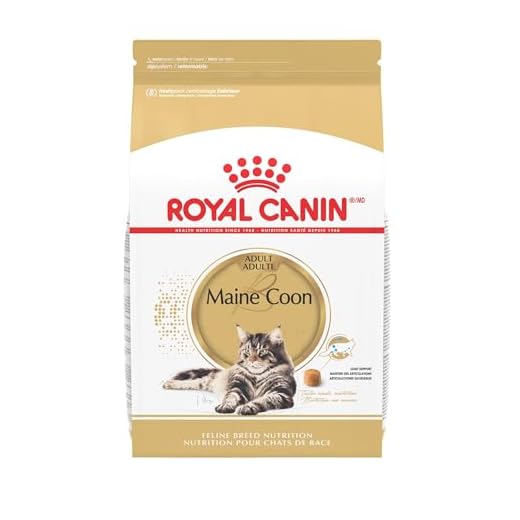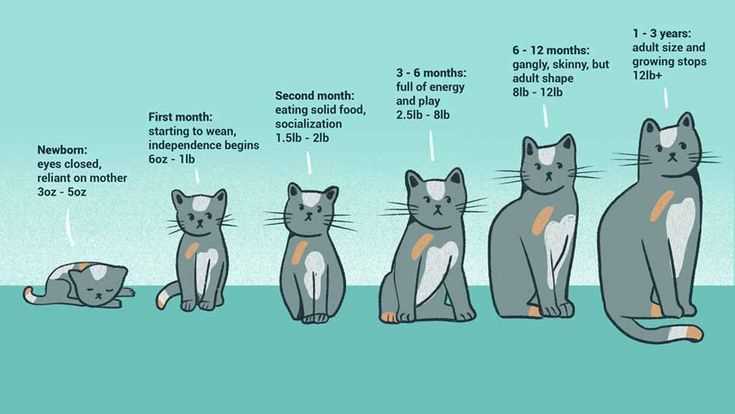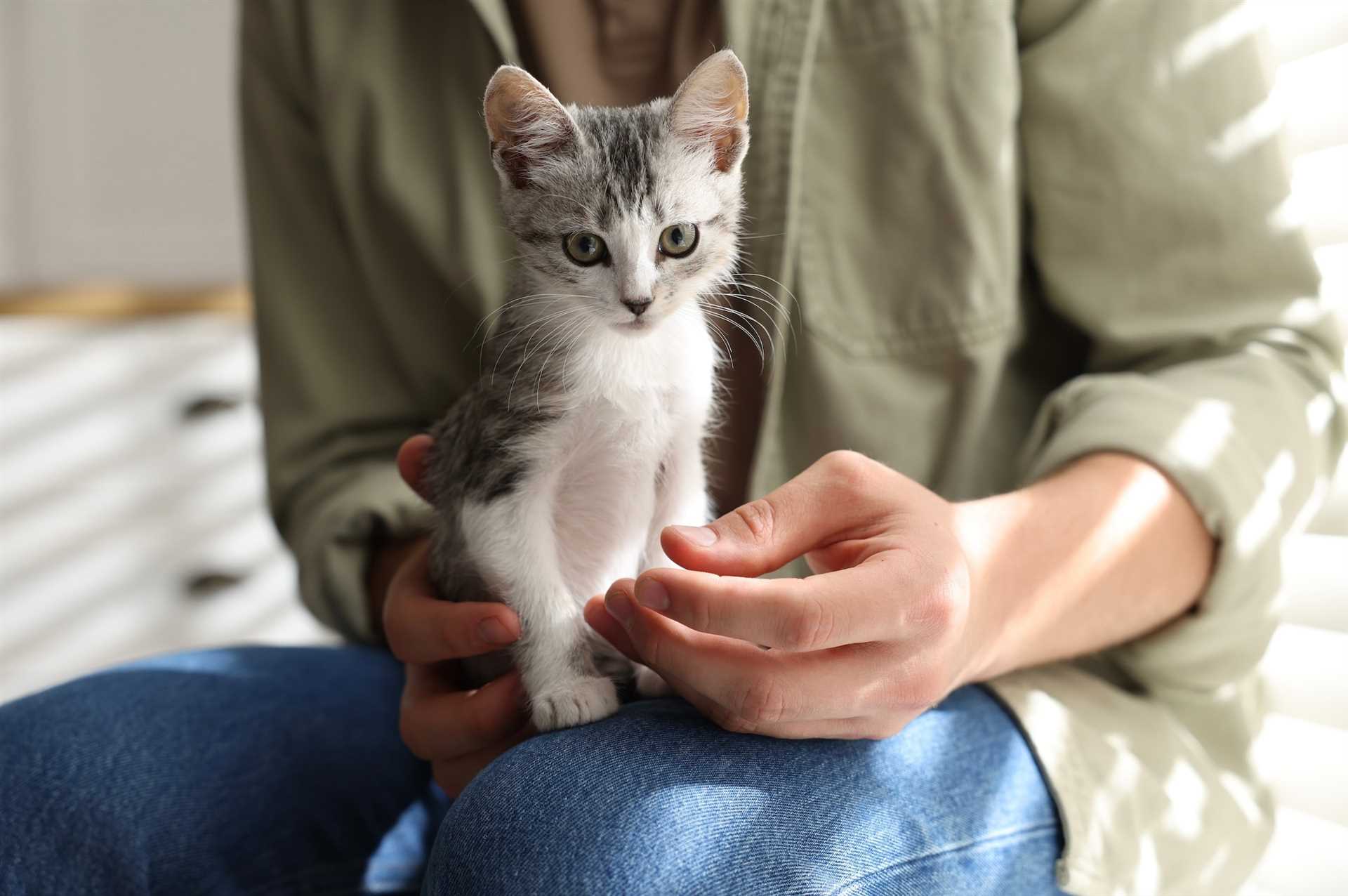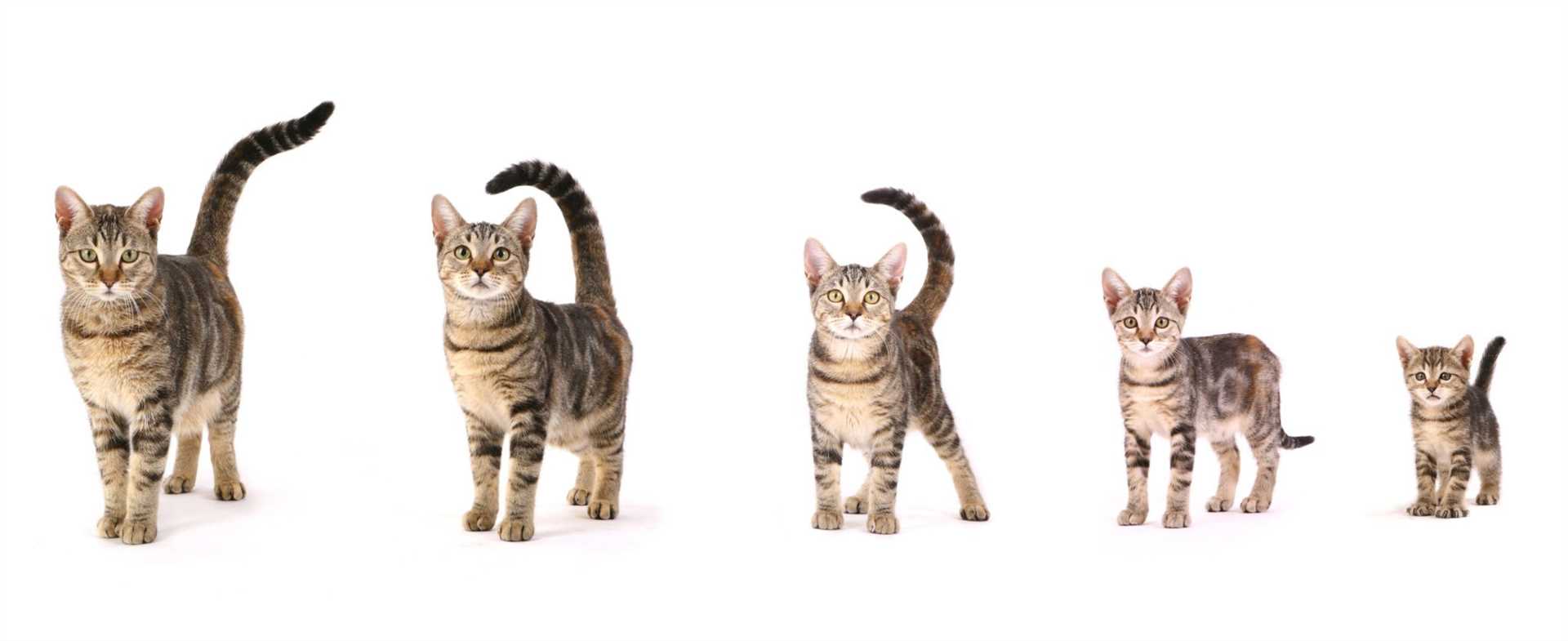



By the age of one, I reached my adult size, weighing around 8 to 12 pounds, depending on my diet and activity. This stage marks the transition from playful kitten to a more settled feline, with my bones and muscles fully developed.
Between six months and two years, my appearance evolves significantly. During this period, my coat becomes thicker, and my personality matures. It’s fascinating to observe how I change physically and emotionally as I approach adulthood.
Nutrition plays a pivotal role in my growth. A balanced diet tailored to my age ensures I develop properly. Regular vet check-ups help monitor my health and weight, ensuring that I remain agile and fit throughout my life.
Every breed has its unique growth patterns. For example, larger breeds, like Maine Coons, may take up to four years to reach their full potential, whereas smaller breeds can mature faster. Understanding these differences helps in providing the best care.
In conclusion, being aware of my growth stages allows for better companionship and care. Monitoring my progress not only ensures I stay healthy but also enriches our bond as I grow into my majestic self.
Understanding Cat Growth Stages
From my observations, the development of a feline occurs in distinct phases, each with unique characteristics. At around eight weeks, kittens reach a critical point, transitioning from dependence on their mothers to exploring their surroundings. This is the stage where they start to show their individual personalities and play behaviors.
Early Development
During the first three months, a young one experiences rapid physical changes. Weight gain is noticeable, and by twelve weeks, most have reached a significant portion of their adult size. This is also when socialization is crucial; exposure to different people and environments aids in their temperament and adaptability.
Adolescent Changes

As they enter the adolescent phase, typically around six months, behavior may shift. Expect increased energy levels and exploratory tendencies. This stage can also bring about hormonal changes, marking the onset of sexual maturity. Neutering or spaying is recommended during this time to prevent unwanted litters and behaviors.
By twelve months, many reach a plateau in growth, though they may continue to fill out until around two years. Regular check-ups ensure they maintain a healthy weight and development. Understanding these phases helps in providing the right care and attention to support a happy companion.
Factors Influencing Growth Rate

Nutrition plays a pivotal role in determining how quickly a feline matures. A balanced diet rich in protein, vitamins, and minerals is crucial. Kittens require more calories than adults, so it’s essential to provide appropriate food that meets their developmental needs.
Genetics also significantly impacts size and growth patterns. Breeds vary in their growth rates; for instance, larger breeds like Maine Coons may take longer to reach their peak size compared to smaller breeds like Singapura.
Health status is another key factor. Regular veterinary check-ups ensure that any health issues are addressed promptly, which can influence overall growth. Parasites, for example, can hinder development, making it vital to keep up with preventative care.
Socialization and environment also affect growth. Stressful situations can lead to slow growth, while a loving, stable home encourages healthy development. Interaction with humans and other pets can promote positive growth experiences.
Lastly, activity level matters. Regular playtime not only keeps a young feline fit but also stimulates healthy muscle and bone development. Engaging in physical activities can foster a stronger and more robust companion.
Average Growth Timeline for Different Breeds
Understanding the development stages of various feline breeds is crucial for any pet owner. Here’s a breakdown of the growth timeline for some popular breeds:
- Scottish Fold:
- Birth to 3 months: Rapid growth, reaching about 3-4 pounds.
- 3 to 6 months: Weight increases to around 5-7 pounds; they begin to develop distinct ear folds.
- 6 months to 1 year: Approaching full maturity, weighing between 8-10 pounds.
- Siamese:
- Birth to 3 months: Growth from 1 pound to about 3 pounds.
- 3 to 6 months: Weight reaches approximately 5-6 pounds; noticeable color changes in the coat.
- 6 months to 1 year: Final weight around 8-10 pounds; full coat and eye color emerge.
- Maine Coon:
- Birth to 3 months: Starts at roughly 1 pound; grows rapidly.
- 3 to 6 months: Can reach 6-8 pounds; unique tufted ears and bushy tails begin to form.
- 6 months to 1 year: Weight can hit 10-12 pounds; nearing adult size.
- Persian:
- Birth to 3 months: Gains about 1-2 pounds; developing characteristic flat face.
- 3 to 6 months: Reaches around 5-6 pounds; fur begins to fluff out.
- 6 months to 1 year: Weight stabilizes at 7-10 pounds; full coat and facial features are prominent.
- Bengal:
- Birth to 3 months: Starts at 1 pound; rapid early growth.
- 3 to 6 months: Can reach 5-7 pounds; distinctive spotted coat develops.
- 6 months to 1 year: Final weight between 10-15 pounds; athletic build becomes evident.
Tracking these milestones can help you ensure proper nutrition and care as your furry friends mature into their adult selves. Each breed has unique traits that influence their growth and final size, so understanding these specifics aids in better preparation for their needs.
Signs You’re Approaching Full Size
Pay attention to your furry companion’s weight and physical proportions. A steady increase in weight may indicate growth is nearing completion. If your feline gains minimal weight over a few months, it’s a sign they’re almost at their adult size.
Observe the development of their features. When the face transitions to a more mature look, with defined cheekbones and a less kittenish appearance, it suggests maturity is on the horizon. Additionally, paws that seem disproportionately large compared to the body may start to look more proportional as they reach adulthood.
Look for behavioral changes. As your pet matures, their energy levels often stabilize. If they shift from hyperactive playfulness to a calmer demeanor, it’s a clue that they’re growing up. This maturation may also reflect in their social interactions, as they start to engage differently with both humans and other pets.
Monitor their eating habits. Once they begin to eat less or show preferences for certain types of food, it’s a good indication of reaching maturity. An adult diet may also be introduced, which can be a clear sign of their growth phase concluding.
Lastly, ensure your pet is protected from pests with the best non toxic flea treatment for cats. This not only keeps them comfortable but also supports their overall health as they transition into adulthood.
Nutrition’s Role in Feline Development
For optimal growth, it’s crucial to provide a balanced diet rich in protein, fats, vitamins, and minerals. High-quality commercial foods formulated for kittens are designed to meet their specific nutritional needs, ensuring a strong skeletal structure and healthy muscles.
Key Nutrients for Growth
Proteins are the building blocks of muscle. Choose a food with meat as the first ingredient to ensure adequate protein intake. Fats provide energy and support brain development, while carbohydrates offer a quick energy source. Essential vitamins and minerals, like calcium and phosphorus, play a pivotal role in bone development.
| Nutrient | Function |
|---|---|
| Protein | Muscle development and repair |
| Fat | Energy source and brain health |
| Calcium | Bone strength |
| Phosphorus | Bone growth |
| Vitamins A, D, E, and B | Overall health and immune support |
<h3 Feeding Schedule
Frequent meals are essential during the early stages. I recommend feeding kittens three to four times a day until they reach about six months of age. After that, transitioning to two meals a day is sufficient. Always ensure fresh water is available.
Monitor your little one’s weight and adjust portions accordingly. If they seem too thin or gain weight rapidly, consult a vet for tailored advice. The right nutrition lays the foundation for a healthy, energetic companion.
Common Myths About Size and Growth

Many believe that all felines grow at the same pace, but this isn’t true. Each breed has unique growth patterns, and size can vary significantly. It’s a misconception that larger breeds will always be bulkier than smaller ones. For instance, a Maine Coon may be larger than a Siamese, but individual variations exist within each breed.
Myth: Spaying or Neutering Stunts Growth
Some think that altering a pet will prevent it from reaching its maximum potential size. This is incorrect. Spaying or neutering does not inhibit growth; rather, it can contribute to healthier development by preventing certain health issues.
Myth: Size is Predetermined by Parents
While genetics play a role in determining final size, environmental factors significantly influence growth too. Nutrition, health care, and living conditions can all affect how much weight and height a feline achieves, regardless of parental size.
Another common myth is that a heavier pet is automatically healthier. Obesity can lead to various health problems. Maintaining a balanced diet and regular activity is key to ensuring well-being, regardless of size.
Lastly, many mistakenly believe that a larger feline is always older. Age should not be determined solely by size; growth rates vary widely, and it’s crucial to consult a veterinarian for accurate assessments of age and health.
When to Consult a Veterinarian About Growth Issues
If you notice any irregularities in your feline’s development, it’s best to seek veterinary advice without delay. Key signs that warrant a visit include stunted growth, excessive weight gain, or abnormal body proportions. These indicators can suggest underlying health conditions that need professional assessment.
Regular check-ups are advisable, especially during the crucial growth phases. Your vet can provide tailored nutrition plans and monitor weight changes effectively. If your companion is not reaching expected size milestones for their breed, a discussion with your veterinarian can help identify possible nutritional deficiencies or health issues.
Specific Conditions to Watch For
Be alert for symptoms like lethargy, lack of appetite, or behavioral changes alongside growth concerns. These may indicate metabolic issues or other health complications. Additionally, if your furry friend exhibits any signs of discomfort or pain, don’t hesitate to consult with a professional.
Nutritional Considerations
Discuss your pet’s diet with a veterinarian to ensure it meets their developmental needs. An improper diet can impact growth rates significantly. For those curious about maintaining a clean environment while caring for your pet, exploring options like the best freestanding dishwashers under 300 can be a wise choice.
FAQ:
At what age do cats typically stop growing?
Cats generally reach their full size between 12 to 18 months of age. Most kittens will experience rapid growth in the first six months, followed by a slower growth rate until they are around a year old. By the time they reach 18 months, most cats will have achieved their adult weight and size.
Are there differences in growth rates between cat breeds?
Yes, different cat breeds can have varying growth rates. For instance, larger breeds like Maine Coons may take longer to reach their full size, sometimes up to 4 years, while smaller breeds, such as Singapura or Munchkin, may mature more quickly. It’s important to research specific breeds to understand their growth patterns.
How can I tell if my kitten is growing properly?
To ensure your kitten is growing well, monitor its weight regularly and observe its physical development. A healthy kitten should gain weight consistently and show signs of playful behavior. Regular veterinary check-ups can also help assess growth and overall health. If you notice any significant changes in appetite or energy levels, consult a veterinarian.
What factors influence a cat’s growth?
Several factors can affect a cat’s growth, including genetics, diet, and overall health. A balanced diet rich in proteins and essential nutrients is crucial for proper growth. Environmental factors, such as living conditions and stress levels, can also play a role. Kittens from well-cared-for environments tend to grow healthier and faster.
How can I support my cat’s growth during its development stages?
To support your cat’s growth, provide a high-quality, age-appropriate diet that meets their nutritional needs. Regular veterinary visits are important for vaccinations and health checks. Additionally, ensure your kitten has plenty of opportunities for play and exercise, which helps in developing strong muscles and healthy bones. Socialization with other animals and humans is also beneficial for their overall development.









